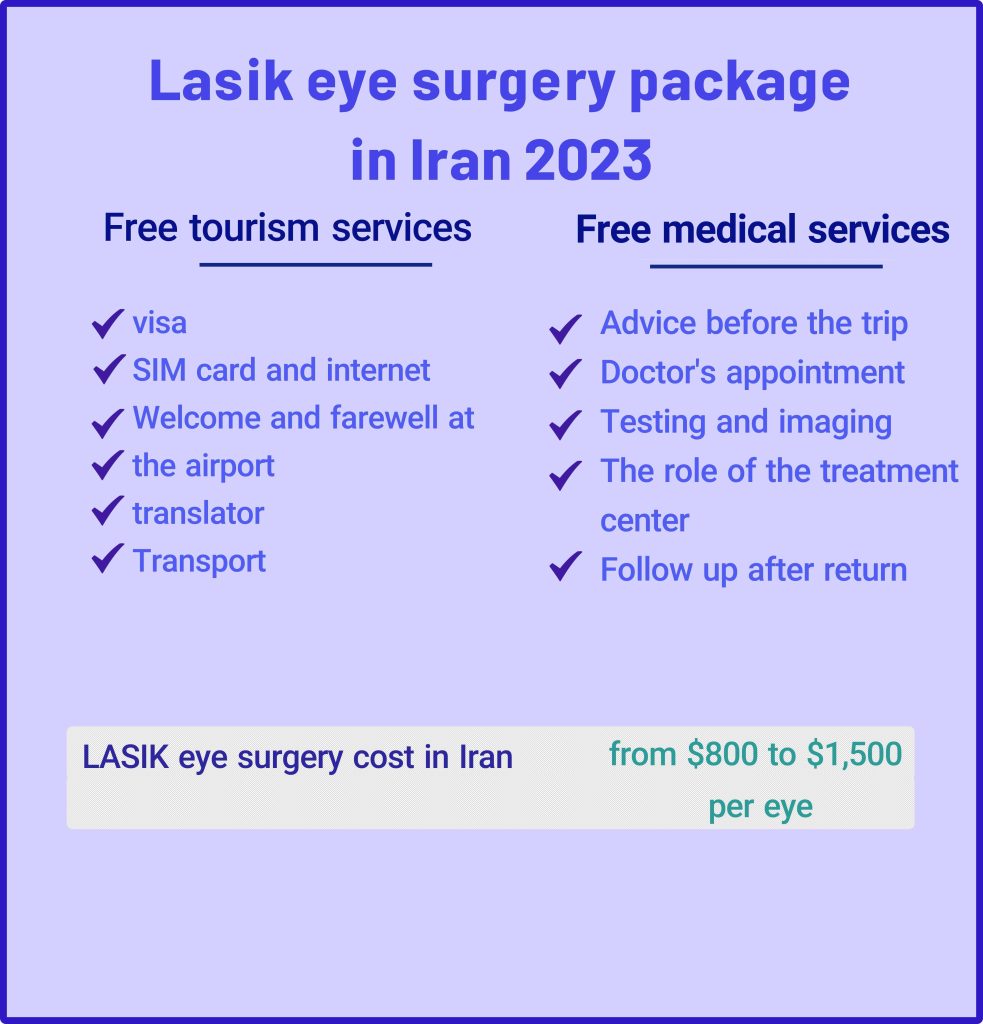
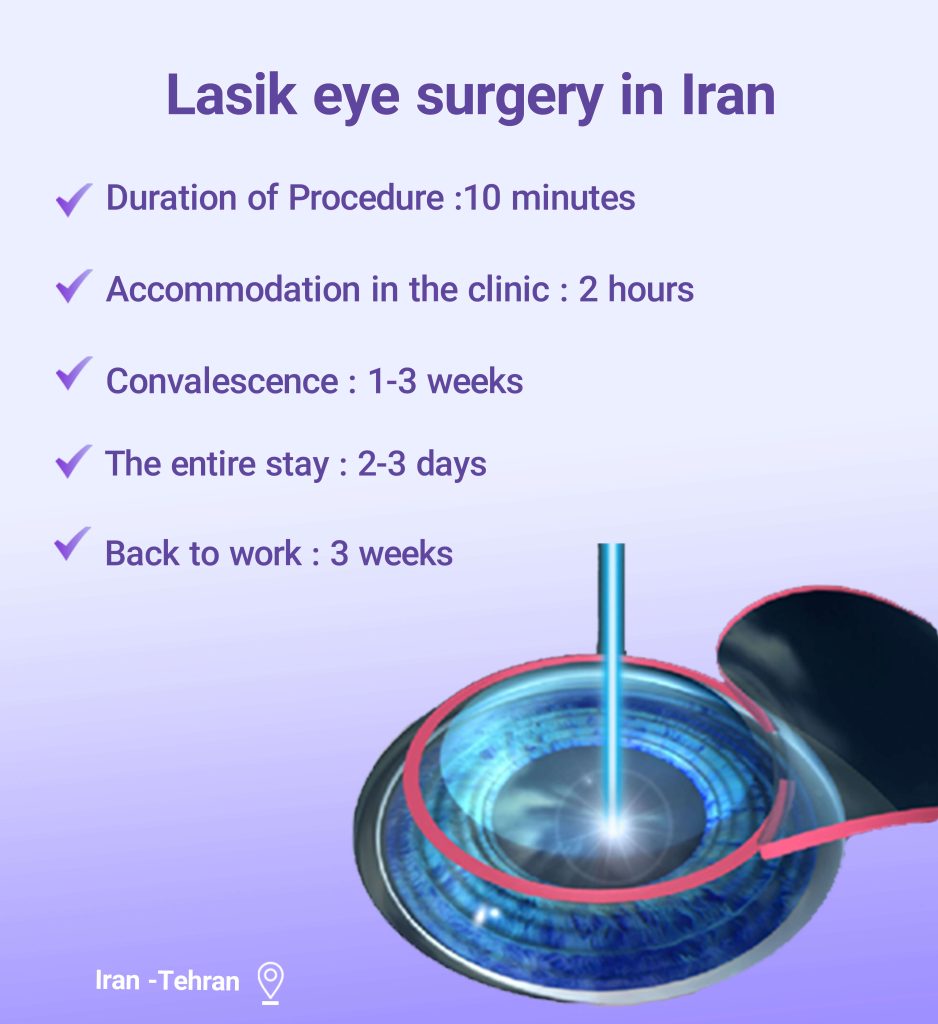
LASIK Eye Surgery in Iran: Ultimate Guide and Cost
In recent years, Iran has become a global leader in LASIK Eye Surgery, showcasing notable advancements that position it among the top countries in the field. Boasting a prominent spot among the top 10 nations excelling in LASIK, Iran beckons those seeking cutting-edge vision correction.
Iran stands out for its budget-friendly LASIK Eye Surgery and top-notch medical practices, making it a preferred option for those eyeing overseas LASIK. The cost-effectiveness, coupled with guaranteed healthcare excellence, positions Iran as an appealing hub for reliable and affordable eye care services.
The journey to LASIK excellence in Iran is guided by skilled surgeons renowned for precision and proficiency. Armed with state-of-the-art technology and a commitment to optimal patient outcomes, these experts ensure a transformative experience for those rejuvenating their vision.
Beyond the medical realm, Iran offers a warm and hospitable local community, creating a supportive environment for individuals undergoing LASIK procedures. The blend of medical expertise and cultural warmth fosters a unique and comforting atmosphere for international patients, making choosing Iran for LASIK an intuitive decision.
How much does eye LASIK cost in Iran? Is Iran good for eye surgery? Which country is better for LASIK eye surgery? Which country is the best in eye surgery? Stay with us to answer these and more questions.
LASIK Eye Surgery in Iran: all you need to know
LASIK (Laser-Assisted in Situ Keratomileusis) is a type of refractive eye surgery that uses a laser to reshape the cornea in order to correct vision problems, such as nearsightedness, farsightedness, and astigmatism.
While undergoing the surgery, a microkeratome or femtosecond laser is employed to craft a delicate corneal flap. Elevating the flap reveals the cornea, allowing a laser to precisely eliminate a small portion of corneal tissue. This meticulous process reshapes the cornea, enhancing the focal point of light on the retina. Subsequently, the flap is delicately repositioned onto the cornea, naturally adhering without necessitating stitches.
LASIK surgery may be an option for the correction of these vision problems:
Nearsightedness
Myopia, commonly known as nearsightedness, is a prevalent refractive error that causes clear vision of close objects but blurriness for distant ones. This occurs when light focuses in front of the retina rather than directly on it. Addressing this issue can be achieved through corrective lenses or refractive surgeries such as LASIK.
Farsightedness
Hyperopia, or farsightedness, is a refractive error leading to clearer vision for distant objects than close ones, as light focuses behind the retina. Correcting this condition typically involves the use of convex lenses or refractive procedures such as LASIK.
Astigmatism
Astigmatism, a vision flaw due to uneven corneal or lens curvature, causes blurry vision. It can be corrected with glasses, contacts, or LASIK surgery, altering light entry for clearer eyesight.
How Laser Eye Surgery (Lasik) is Performed?
Femtosecond LASIK procedure
Lasik eye surgery cost in Iran
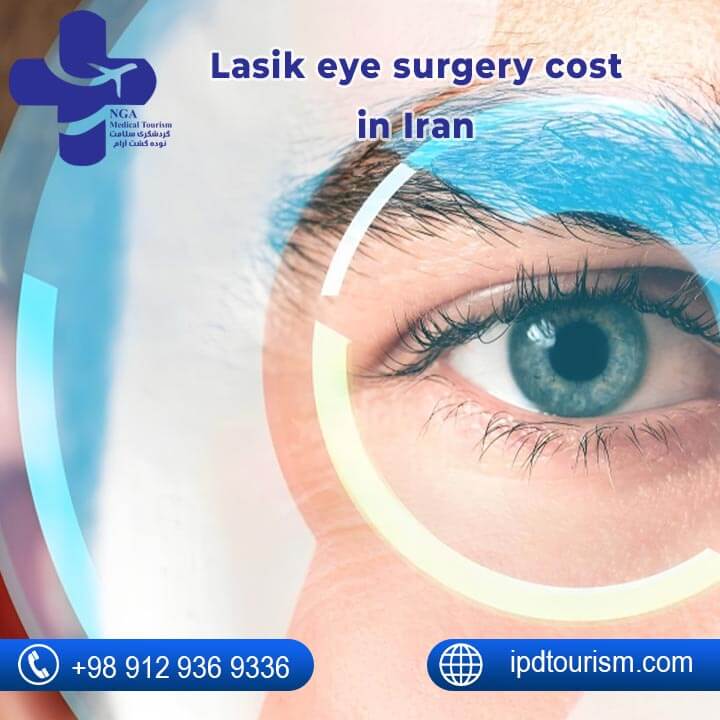
The cost of laser Surgery in Iran is subject to variation based on factors like the clinic’s location, the surgeon’s experience, the type of laser employed, and the technology utilized for preoperative testing and postoperative care.
On average, the cost of LASIK in the United States can range from around $1,000 to $3,000 per eye. However, in some cases, the cost may be higher or lower than this range, depending on the factors mentioned above.
It’s important to note that insurance typically does not cover the cost of LASIK, as it is considered an elective procedure. However, some clinics may offer financing options or payment plans to help make the procedure more affordable.
It’s important to do your research and compare prices and options among different clinics before making a decision about where to have the procedure done. Additionally, it’s important to choose a qualified and experienced surgeon who has a good track record of success with LASIK.
LASIK Eye Surgery Candidacy
LASIK Eye Surgery in Iran is recommended for the following individuals:
- Individuals with myopia and eye prescriptions ranging from 1 to 8.
- Individuals with hyperopia and eye prescriptions of approximately 6.
- Individuals with astigmatism and eye prescriptions of 4.
Absolutely, eligibility for LASIK surgery typically involves candidates being over 18 years old, having a stable prescription, and possessing sufficient corneal tissue thickness. These criteria ensure that individuals are at an appropriate stage in their eye development and have the necessary conditions for a successful LASIK procedure.
What is the best age for lasik surgery?
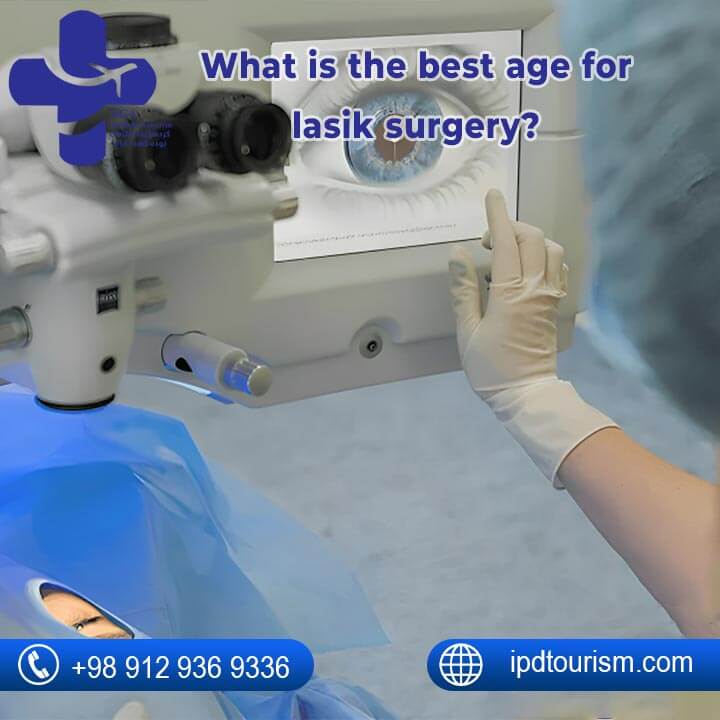
The ideal age for LASIK is typically in your 20s or 30s when your eyes have fully developed, and your prescription is stable. It’s not recommended for those under 18 or over 60. Postponing surgery may lead to decreased success due to aging tissues, potential cosmetic issues from prolonged glasses use, and a lower quality of life for those averse to wearing glasses, as LASIK offers vision improvement and freedom from glasses.
How is LASIK Eye Surgery performed in Iran?
During LASIK surgery, a precise flap is crafted on the cornea’s surface. The cornea is then reshaped using a laser to address vision issues such as nearsightedness, farsightedness, and astigmatism. Following the reshaping, the corneal flap is delicately repositioned. The healing process is generally rapid, accompanied by minimal discomfort. The procedure itself is brief, and many patients notice enhanced vision shortly after undergoing LASIK.
LASIK eye surgery recovery time
The recovery time after LASIK (Laser-Assisted in Situ Keratomileusis) can vary depending on several factors, such as the type of LASIK procedure, the extent of your vision correction, and your overall health and healing ability.
In general, most patients experience improved vision immediately after the procedure, although your vision may be blurry or hazy for the first few hours after the surgery. You will likely experience some discomfort, including dry eyes, itching, and mild pain or burning sensation, for the first few days after the surgery. Your surgeon may prescribe eye drops or other medications to help manage these symptoms.
It’s important to avoid rubbing your eyes or getting water in your eyes for several days after the surgery to minimize the risk of infection or dislodging the corneal flap. You should also avoid strenuous activities and contact sports for at least a week after the surgery, as well as wearing makeup or applying lotions or creams around your eyes.
Most patients are able to return to work or normal activities within a day or two after the surgery, although you should avoid driving until your vision has stabilized and cleared. Your surgeon will likely schedule several follow-up appointments to monitor your healing progress and ensure that you are recovering well.
Overall, the recovery time after LASIK is relatively quick, and most patients experience significant improvement in their vision within the first few days or weeks after the surgery. However, it’s important to follow your surgeon’s instructions carefully and attend all follow-up appointments to ensure a successful recovery.
LASIK eye surgery risks
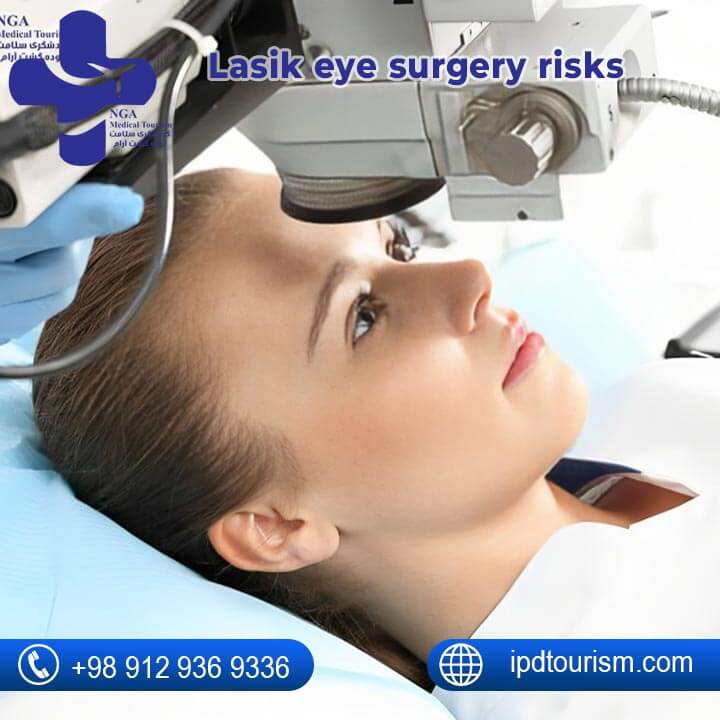
While LASIK (Laser-Assisted in Situ Keratomileusis) is generally considered safe and effective, like any surgical procedure, there are risks and potential complications associated with the surgery. Some of the potential risks and complications of LASIK include:
1. Dry eyes: Many patients experience temporary dryness and discomfort in their eyes after LASIK, which can be managed with eye drops or other medications. However, in some cases, dry eyes can persist for several months or longer after the surgery.
2. Glare, halos, and double vision: Some patients may experience glare, halos, or double vision after LASIK, particularly at night or in low-light conditions. These symptoms may improve over time, but in some cases, they can persist and affect vision quality.
3. Overcorrection or undercorrection of vision: While LASIK is designed to correct nearsightedness, farsightedness, and astigmatism, the degree of correction achieved may vary and may require a retreatment procedure.
4. Flap complications: In some cases, the flap created during LASIK surgery may become dislodged or wrinkled, which can affect vision quality and require additional surgery to correct.
5. Vision loss: While rare, LASIK can result in a loss of vision in some cases, particularly if there is an underlying eye condition that was not detected before the surgery.
It’s important to discuss the potential risks and benefits of LASIK with a qualified eye doctor before deciding whether it is the right option for you. Your surgeon will also thoroughly evaluate your eyes and medical history to determine whether you are a good candidate for the procedure and to minimize the risk of complications.
Patients' experiences of LASIK surgery in Iran
Is LASIK Eye Surgery Safe?
Absolutely, that’s a balanced perspective. While LASIK is generally safe with minimal and often temporary side effects, it’s crucial to inform patients about potential risks such as dry eyes, light sensitivity, and blurred vision. It’s important to set realistic expectations, as complete vision correction isn’t guaranteed, and some individuals may still require glasses for specific tasks. Despite these considerations, the majority of patients tend to be satisfied with the overall benefits of LASIK.
Lasik eye surgery Side Effects

Understanding potential side effects is vital for informed decisions, including LASIK. It lets individuals balance risks and benefits according to preferences and health. Some LASIK side effects may include:
- Dry eyes are a common post-LASIK occurrence, with many patients experiencing temporary discomfort. This condition may persist for several weeks or months following the surgery. Fortunately, it can be effectively managed with the use of eye drops or other prescribed medications.
- It’s not uncommon for patients to encounter glare, halos, or double vision, especially during nighttime or in low-light settings, following LASIK. While these symptoms may ameliorate with time, there are instances where they persist and impact vision quality.
- Absolutely, taking proactive measures to maintain proper hygiene and diligently following aftercare instructions is key to minimizing the risk of eye infections post-LASIK. By being vigilant and attentive to these aspects, individuals can contribute significantly to a smooth and complication-free recovery process.
- Flap complications: In rare cases, the flap created during LASIK surgery may become dislodged or wrinkled, which can affect vision quality and require additional surgery to correct.
5.LASIK’s correction level can vary, and retreatment for fine-tuning is not unusual. Follow-up assessments are crucial to ensure the desired vision correction is achieved over time.
It’s important to discuss the potential risks and side effects of LASIK with a qualified eye doctor before deciding whether it is the right option for you. Your surgeon will also thoroughly evaluate your eyes and medical history to determine whether you are a good candidate for the procedure and to minimize the risk of complications.
Which country is cheapest for laser eye surgery?
In Iran, LASIK eye surgery costs typically range between $800 and $1,500 per eye. This encompasses expenses like doctor consultations, clinic facilities, anesthesia, medications, post-operative recovery, follow-up appointments, and more. Prices may fluctuate based on the surgeon’s acclaim, expertise, the intricacy of the procedure, and the chosen clinic.
Which country is best for LASIK eye surgery?
Iran stands out for its exceptional eye care, excellence in vision correction, cataract surgery and glaucoma treatments, including LASIK, LASIK and Smile Laser.
Is Iran good for eye surgery?
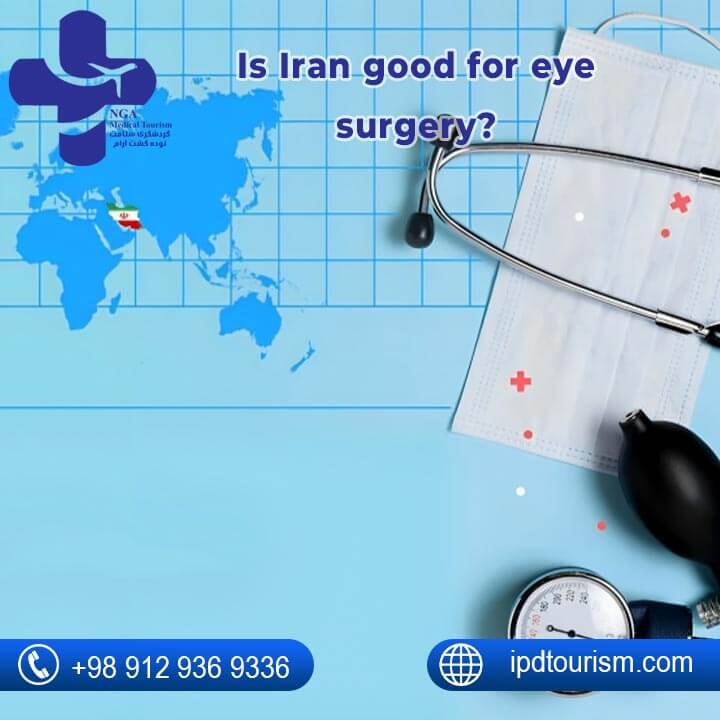
Your description paints a compelling picture of Iran’s standing in the field of LASIK Eye Surgery. The alignment of advanced medical technology and skilled human resources puts Iran on par with renowned countries. The added advantage of cost-effectiveness further positions Iran as an attractive destination, drawing patients not only from neighboring countries but also from beyond. This combination of quality and affordability makes Iran a standout choice for those seeking vision correction through LASIK Eye Surgery.
Why Choose ipdtourism?
ipdtourism’s role as Iran’s leading medical tourism facilitator is perfect. Ensuring a smooth experience, particularly for procedures like LASIK, is invaluable for international patients. The professional team’s support, from decision-making to journey completion, adds confidence and convenience.
a Conclusion for LASIK Eye Surgery
Your conclusion succinctly captures the essence of LASIK, highlighting its popularity and effectiveness in addressing common vision problems. The mention of using a laser to reshape the cornea and improve the focus of light on the retina emphasizes the precision and technological innovation involved in the procedure.
I’m glad you found the assessment accurate! A skilled surgeon and diligent post-op care are crucial for LASIK success and safety. Open talks with an informed eye doctor empower informed choices about eye health and LASIK.
Your explanation about the varying factors influencing the cost of LASIK provides a well-rounded understanding of the financial considerations involved. It’s reassuring to know that many clinics offer financing options or payment plans, making LASIK more accessible and affordable for a broader range of patients. This financial flexibility is likely to be a significant factor for individuals considering the procedure.
The conclusion highlights LASIK’s life-changing effect, emphasizing freedom from glasses and improved vision. Encouraging consultations with skilled surgeons underscores the need for informed decisions in the LASIK journey.
FAQ:
While the effects of LASIK surgery are permanent, the benefits can decrease over time. For most patients, the results of LASIK will last a lifetime. About 10-12% of patients nationwide will need an enhancement surgery because of anatomical changes to the eye/eyes.
However, for those who are perfect candidates for the treatment, it’s an incredibly worthwhile procedure that may liberate you from a lifetime of poor vision and reliance on eyeglasses. As such, nearly all patients agree that Lasik surgery is completely worth it.
How Safe is LASIK? All surgeries carry some risk of complications and side effects, but LASIK is generally considered a safe procedure with a low complication rate. In fact, LASIK is one of the safest elective surgical procedures available today, with a complication rate estimated to be less than 1%.
Lasik Surgery Cost in Pampanga can start from Php 59,000 while Lasik surgery costs in places like Manila usually start from Php 70,000.
No surgical procedure is 100% effective. However, LASIK has one of the highest success and satisfaction rates of any elective procedure, with 96% of LASIK patients reporting high satisfaction after treatment. Effectiveness studies show that 70% to 90% of LASIK patients achieve 20/20 vision or better after treatment.
What many don’t realize is that LASIK surgery doesn’t protect against age-related eye conditions or remove certain refractive errors caused by the thickness of the cornea. For this reason, even individuals who have had successful LASIK surgery may need glasses.
If you were trying to choose the optimal age to get LASIK, then your mid-twenties to thirties would probably be your best bet. Your prescription should be stable by now, and you have yet to develop presbyopia.
In addition, LASIK can dramatically improve your long-term quality of life. In many cases, you will no longer need glasses, meaning you can see the world without frames in your peripheral vision. It will also make it easier to travel, play sports, and enjoy many other physical activities.


